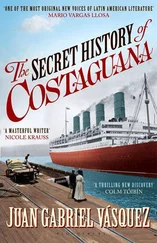Italy had been hardly touched by the Reformation. Nevertheless, the Waldenses, who had survived since the middle ages in spite of persecutions and established themselves in the north and south of the peninsula, joined the Calvinist Church in 1532. On a report from the Jesuit Possevino, Emmanuel Philibert of Savoy launched another bloody persecution against his
"heretic" subjects in 1561. The same thing happened in Calabria, at Casal di San Sisto and Guardia Fiscale. "The Jesuits were implicated in these massacres; they were busy converting the victims..."(4) As for Father Possevino: "... he followed the Catholic army as their chaplain, and recommended the extermination by fire of the heretic pastors as a necessary and holy act".(5)
The Jesuits were all powerful in Parma, at the court of the Farnese, as well as in Naples during the 16th and 17th centuries. But in Venice, where they had been loaded with favours, they were banished on the 14th of May 1606, "as the most faithful servants and spokesmen of the pope..."
They were nevertheless allowed to return in 1656, but their influence in the Republic was to be from now on but a shadow of the one they had in the past.
Portugal was a choice country for the Order. "Already under John III (1521-1559), it was the most powerful religious community in the kingdom".(6) Its influence grew even more after the revolution of 1640
which put the Braganza on the throne. "Under the first king of the house of Braganza, Father Fernandez was a member of the government and, under the minority of Alphonse VI, the counsellor most heeded by the regent Queen Louise. Father de Ville was successful in overthrowing Alphonse VI in 1667, and Father Emmanuel Fernandez was made a deputy to the "Cortes" in 1667 by the new King Peter II... In spite of the fact that the Fathers were not fulfilling any public duty in the kingdom, they were more powerful in Portugal than in any other country. Not only were they spiritual advisers to all the royal family, but the king and his minister consulted them in all important circumstances. From one of their own testimonies, we know that not one place in the administration of the State and Church could be obtained without their consent; so much so that the clergy, the high classes and the people contended with each other to win their favours and approval. Foreign politics were also under their influence. Any sensible man would see that such a state of affairs was (4) J. Huber, op.cit., p. 165.
(5) H. Boehmer, op.cit., p.89.
(6) H. Boehmer, op.cit., pp.85, 86, 87, 88.
ITALY, PORTUGAL, SPAIN
33
unprofitable to the good of the kingdom".(7) In fact, we can see the results by the decadent state into which this unfortunate land fell. All the energy and perspicacity of the marquess of Pombal, in the middle of the 18th century, were needed to tear Portugal out of the Order's deadly grip.
In Spain, the Order's penetration was slower. The higher clergy and the Dominicans opposed it for a long time. The sovereigns themselves, Charles V
and Philip II, while accepting their services, distrusted these soldiers of the pope and feared encroachments on their authority. But, with much craftiness, the Order eventually defeated this resistance. "During the 17th century, they are all-powerful in Spain, among the high classes and at Court. Even Father Neidhart, former German cavalry officer, fully governed the kingdom as Counsellor of State, prime minister and Grand Inquisitor... In Spain as in Portugal, the kingdom's ruin coincided with the rise of the Order..."(8)
This is what Edgar Quinet had to say about it:
"Wherever a dynasty dies, I can see, rising up and standing behind her, a kind of bad genie, one of those dark figures that are the confessors, gently and paternally luring her towards death..."(9) Indeed, one cannot impute Spain's decadence to this Order only.
"Nevertheless, it is true that the Company of Jesus, together with the Church and other religious orders, hastened her fall; the richer the Order became, the poorer Spain was, so much so that when Charles II died, the State's coffers did not even contain the necessary amount to pay for 10,000
masses usually said for the salvation of a deceased monarch's soul."(10) (7) and (8) H. Boehmer, op.cit., pp.85, 86, 87, 88.
(9) Michelet et Quinet, op.cit., p.259.
( 1 0 ) H. Boehmer, op.cit., pp.85, 86, 87, 88.
34 Section II
Chapter 2
Germany
"It was not southern Europe, but central Europe: France, Holland, Germany, Poland, which were the site for that historical struggle between Catholicism and Protestantism. So these countries were the main fields of battle for the Society of Jesus." (11)
The situation was particularly grave in Germany. "Not only notorious pessimists, but also thinking and wise Catholics considered the old church's cause in all German lands as almost lost. In fact, even in Austria and Bohemia, the break with Rome was so general that the Protestants could reasonably hope to conquer Austria within a few decades. Then how is it this change did not take place and the country was divided into two sections instead? The Catholic party, at the close of the 16th century, had no hesitation in answering this question, for it always acknowledged that the Witelsbach, Habsburg and Jesuits were responsible for this happy turn of events."(12)
Rene Fulop-Miller wrote about the Jesuits' role in these events: "The Catholic cause could hope for a real success only if the Fathers were able to influence and guide the princes, at all times and in all circumstances. The confessionals offered the Jesuits the means to secure a lasting political influence, therefore an effectual action" .(13) In Bavaria, the young duke Albert V, son of a zealous Catholic and educated at Ingolstadt, the old Catholic city, called on the Jesuits to combat effectively the heresy:
"On the 7th of July 1556, 8 Fathers and 12 Jesuit teachers entered Ingolstadt. It was the start of a new era for Bavaria... the State itself received a new Seal.... the Roman Catholic conceptions directed the politics of princes and the behaviour of the high classes. But this new spirit got hold (11) and (12) H. Boehmer, op.cit., pp.89, 104, ,112, 114. (13) Rene Fulop-Miller, op.cit., II, pp.98, 102.
GERMANY
35
of the higher classes only. It did not gain the hearts of ordinary people...
Nevertheless, under the iron discipline of the State and the restored Church, they again became devout Catholics, docile, fanatic, and intolerant towards any heresy..."
"It may seem excessive to attribute such prodigious virtues and actions to a mere handful of strangers. Yet, in these circumstances, their force was in inverse ratio to their numbers and they were immediately effective as no obstacles were met.
Loyola's emissaries won the country's heart and mind from the start... From the next generation on, Ingolstadt became the perfect type of the german Jesuit city".(14) One can judge the state of mind the Fathers introduced to this stronghold of faith by reading the following:
"The Jesuit Mayrhofer of Ingolstadt taught in his "Preacher's mirror": "We will not be judged if we demand the killing of Protestants, any more than we would by asking for the death penalty on thieves, murderers, counterfeiters and revolutionaries."(15)
The successors of Albert V, and especially Maximilian I (1597-1651), completed his work. But Albert V already was conscientious in his "duty" of assuring his subjects' "salvation".
"As soon as the Fathers arrived in Bavaria, his attitude towards Protestants and those favourable to them became more severe. From 1563 on, he pitilessly expelled all recalcitrants, and had no mercy for the anabaptists who had to suffer drownings, fire, prison and chains, all of which were praised by the Jesuit Agricola... In spite of all this, a whole generation of men had to disappear before the persecution was crowned a complete success. As late as 1586, the moravian anabaptists managed to hide 600 victims from the duke Guillaume. This one example proves that there were thousands and not hundreds who were driven out, an awful breach into a thinly populated country.
Читать дальше












